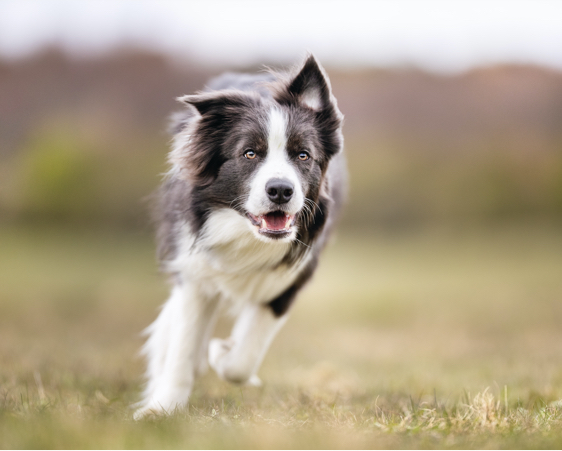Adult dogs require sufficient nutrients to meet energy needs and to maintain and repair body tissues. The amount you feed your adult dog should be based on his or her size and energy output. Activity levels vary dramatically between pets, and will play an important role in determining caloric intake.
As a responsible dog owner, one of the most common pitfalls you’ll have to watch out for is overfeeding. Attempts to shower our dogs with love by means of big meals and tons of tasty treats are sweet, but misguided. In dogs, as with humans, extra weight can lead to health problems. Be sure to indulge your four-legged friend with affection, not food—and read the following tips for more helpful advice from our ASPCA pet nutrition experts:
- Lassie Versus Lazy
House pets vary widely in their activity levels. An animal with a “normal” activity level should receive what we call “maintenance” energy. A pampered lap dog may require 10 percent below maintenance, while an active pet who exercises regularly outdoors may require maintenance plus 20 to 40 percent. - Working Dogs: Earning Their Dinner
The dietary needs of working canines, such as police dogs, guide dogs and cattle dogs, will depend on their occupations. Energy needs will increase with the work level and/or stress level. A dog with a moderate work load may require an energy increase of 40 percent compared to maintenance, whereas a dog with a high work load may require an extra 50 to 70 percent. - Do You Have the Hardest Working Pup in Show Business?
Show dogs must be fed a balanced diet with the correct amount of energy, because deficiencies may be reflected in coat quality. While on the show circuit, the pet’s energy requirement may increase by 20 percent or more. The dog should be fed maintenance amounts when not on the show circuit. - Get Well Soon
An animal recovering from surgery or suffering from a disease may have an increased nutritional requirement for repair, healing and fighting infection. - Whatever the Weather
Environment influences energy needs, and extreme hot or cold weather can increase a dog’s energy needs. Both keeping warm and keeping cool require extra energy expenditure, so you may wish to talk to your pet’s vet about what to do when the mercury dips and/or soars. - How, What, When
Dogs may be fed successfully in a number of ways that meet both the owner’s and the animal’s needs and circumstances. These methods include portion-control feeding, free-choice feeding and timed feeding.
– The portion-control feeding entails measuring your pet’s food and offering it as a meal, thereby controlling the amount of food that can be consumed. This method is used for weight control programs and for animals that might overeat if fed free-choice. Food can be provided in one or more meals daily.
– Free-choice feeding is also known as “ad lib” feeding or “free feeding.” Food is available at all times, as much as the pet wants, whenever the pet wants. Most nursing mothers are fed by the free-choice method. This method is most appropriate when feeding dry food, which will not spoil if left out.
– The timed feeding method involves making a portion of food available for the pet to eat for a specified period of time. For example, the food can be placed in the dog’s bowl for thirty minutes. After that time, if the pet has not consumed the food, it is removed. - Two Square Meals a Day
We recommend all dogs be fed twice daily. Simply divide the amount suggested on the label of your pet’s food into two meals, spaced eight to twelve hours apart. You may need to adjust portions as you learn your dog’s ideal daily “maintenance” amount.

